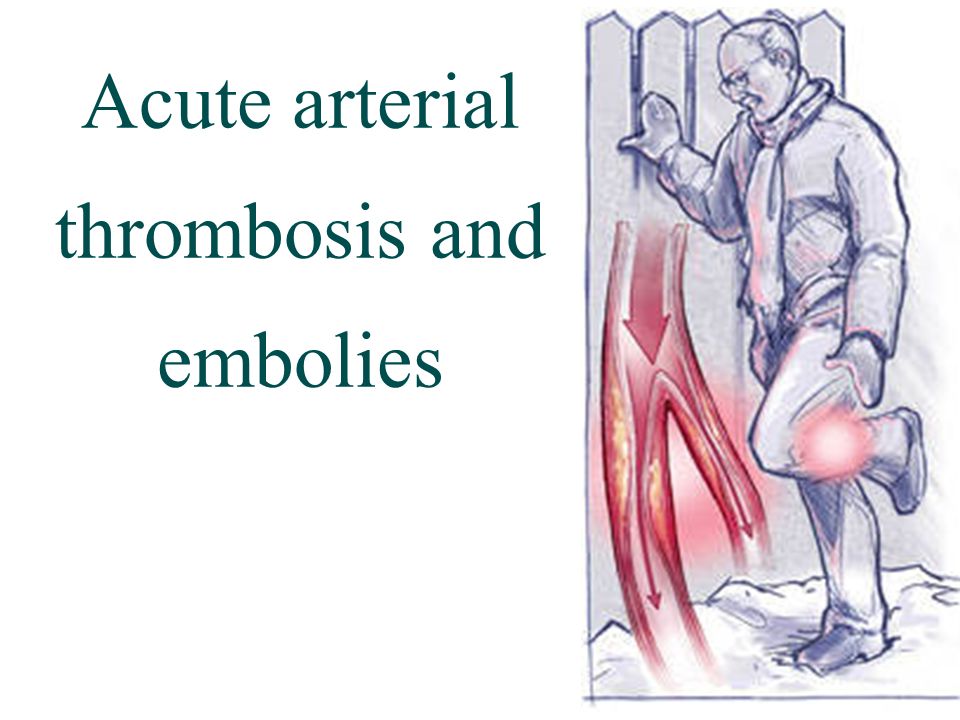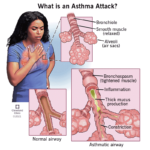Acute arterial thromboembolism is a life-threatening condition caused by the sudden blockage of an artery due to a blood clot. This blockage disrupts blood flow to vital organs and tissues, leading to severe complications if not treated promptly. Understanding its causes, symptoms, and treatment options is essential for timely diagnosis and effective management.

What Is Acute Arterial Thromboembolism?
Acute arterial thromboembolism occurs when a thrombus (blood clot) forms in one part of the arterial system and embolizes, traveling to another location, where it obstructs blood flow. This condition can result in ischemia, or the restriction of blood supply, leading to tissue damage or necrosis.
Common Sites of Embolism
- Lower Extremities: Most cases involve arteries in the legs.
- Brain: Embolism in cerebral arteries can cause ischemic stroke.
- Heart: Coronary artery blockage can result in myocardial infarction.
- Kidneys or Intestines: Embolism in visceral arteries may lead to organ ischemia.
Causes and Risk Factors of Acute Arterial Thromboembolism
Understanding the underlying causes and risk factors is crucial for prevention and early intervention.
Causes
- Atrial Fibrillation (AF): Irregular heart rhythms can lead to blood pooling in the atria, forming clots that may travel to arteries.
- Atherosclerosis: Plaque buildup in arterial walls can rupture, causing clot formation.
- Heart Valve Disorders: Prosthetic valves or valvular disease increase the risk of clot formation.
- Trauma or Surgery: Injuries or surgical procedures can damage arteries, triggering clot development.
- Hypercoagulable States: Conditions such as cancer or genetic clotting disorders increase the likelihood of thrombus formation.
Risk Factors
- Advanced age
- Smoking
- Obesity
- Sedentary lifestyle
- Hypertension
- Diabetes mellitus
Symptoms of Acute Arterial Thromboembolism
Symptoms of arterial thromboembolism depend on the site of blockage and the severity of blood flow restriction. Prompt recognition is critical to prevent complications.
Key Symptoms
- Sudden Pain: Severe, sharp pain at the site of ischemia.
- Pallor: Affected area may appear pale due to lack of blood flow.
- Pulselessness: Weak or absent pulse in the affected limb or area.
- Paresthesia: Tingling or numbness caused by nerve ischemia.
- Paralysis: Loss of function in the affected area if blood flow is not restored promptly.
- Poikilothermia: Inability to regulate temperature in the ischemic region, leading to a cold sensation.
Diagnostic Approach
Timely diagnosis of acute arterial thromboembolism requires clinical evaluation and diagnostic imaging.
1. Physical Examination
- Assess for the “6 Ps” of ischemia: pain, pallor, pulselessness, paresthesia, paralysis, and poikilothermia.
2. Imaging Techniques
- Doppler Ultrasound: Identifies blood flow obstruction in peripheral arteries.
- CT Angiography (CTA): Provides detailed images of the arterial system to pinpoint the site of embolism.
- Magnetic Resonance Angiography (MRA): An alternative to CTA for detailed vascular imaging.
3. Laboratory Tests
- D-dimer levels may be elevated, indicating thrombus formation.
- Blood tests for coagulation profiles and inflammatory markers.
Treatment Options for Acute Arterial Thromboembolism
Effective treatment requires prompt intervention to restore blood flow and prevent tissue damage.
Pharmacologic Interventions
- Anticoagulants: Heparin or low molecular weight heparin is typically administered to prevent clot extension.
- Thrombolytics: Medications like alteplase or tenecteplase are used to dissolve clots in severe cases.
- Antiplatelet Agents: Aspirin or clopidogrel may be prescribed to prevent future thrombotic events.
Surgical Interventions
- Embolectomy: Surgical removal of the clot via a catheter or open procedure.
- Bypass Surgery: Creating a new pathway for blood flow around the blocked artery.
- Endovascular Procedures: Techniques such as balloon angioplasty or stent placement to restore blood flow.
Supportive Care
- Pain management
- Monitoring for reperfusion injury or complications
- Post-procedure anticoagulation therapy to prevent recurrence
Prevention of Acute Arterial Thromboembolism
Reducing the risk of thromboembolism involves addressing modifiable risk factors and medical management for high-risk individuals.
1. Lifestyle Modifications
- Quit smoking.
- Maintain a healthy weight through regular exercise and a balanced diet.
- Control blood pressure and cholesterol levels.
2. Medical Management
- Use anticoagulants or antiplatelet agents as prescribed for conditions such as atrial fibrillation or atherosclerosis.
- Regular monitoring and treatment of underlying health conditions.
3. Post-Surgical Prophylaxis
- Compression stockings and intermittent pneumatic devices.
- Early mobilization after surgery.
Acute arterial thromboembolism is a critical medical emergency requiring swift diagnosis and treatment. Understanding its causes, symptoms, and treatment options is essential for healthcare professionals to improve outcomes and reduce complications. Preventative measures, lifestyle changes, and proactive medical care play a significant role in minimizing the risk of this life-threatening condition.

